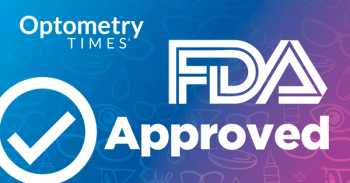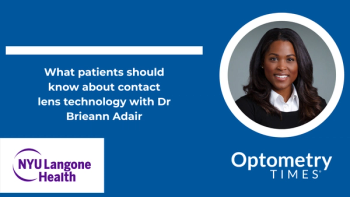
The ethics of care for technicians
Understand how autonomy, justice, beneficence, and non-malfeasance come into play
I have often wondered why there are a limited number of ethics classes available for technical staff to take.
While the doctors have the Hippocratic oath that binds them to their areas of practice, where is the “oath” that the technical staff takes to ensure we are all working under the same premise?
Related:
We know that our role is to ensure that the patient is protected, physically cared for, and that all patient-facing caregivers are responsible to ensure that we always “do the right thing” when it comes to their care. But where do these tenets come from and what do they actually mean to us?
Defining ethics
According to the Oxford Dictionary, ethics are the “moral principles that govern a person's or group’s behavior.”
Ethics deal with right and wrong types of behavior-what we “ought” to do. Ethics are a set of moral principles and the code of behavior that governs an individual’s actions with other individuals in a society. We need to be aware that ethics can, and do, differ among cultures.
Laws are not ethics. Laws are society rules that have defined punishments for violations; ethics do not have established punishments.
Every day, whether at work or during our normal day, we are put in the position to determine what is right and wrong about a given situation or behavior.
Medical ethics are simply ethics as they are applied to medicine.
Related:
Tom L. Beauchamp and James F. Childress, authors of Principles of Biomedical Ethics, determined that medical ethics work with the principles of autonomy, justice, beneficence, and non-malfeasance.
Autonomy
Autonomy addresses respect that a patient has the ability to make decisions for his own care. This respect works with the belief that the patient has the capacity, and the right, to think, decide, and act on his own behalf regarding his care.
The patient needs to be able to make a rational, informed, and un-coerced decision. In order to do this, he must be given the information to make that decision and have the ability to ask questions of the doctor to make sure he has all the information he needs. Note that the patient must be able to ask questions of the doctor, not the technician or nurse.
The concept of autonomy leads to informed consent. This means that a patient cannot have any medical intervention for diagnostic, investigational, or palliative purposes without granting permission. The patient must understand the risks and benefits of the intervention. Informed consent encompasses more than asking a patient to sign a written consent form.
Consent is defined as a process of communication between the patient and the responsible physician who is providing the care that results in the patient's authorization and /or agreement to undergo a specific medical intervention.
For example, if your patient is scheduling surgery, the doctor should discuss the procedure, the hoped-for outcome, and any potential risks.
Informed consent is a conversation which takes place before the form is signed. Be sure the form is signed in the office, not sent home with the patient. You can’t be sure that your patient, not someone else, signed the form.
Keep in mind that patients have the right to refuse medical care, even if you disagree with the patients’ decision to do so.
Patients who are legally competent have the legal right to refuse any or all treatment. This holds true even if the patient chooses to make what the doctor thinks is a bad decision that may result in disability or even death.
Related:
As technicians, we are often placed in the uncomfortable situation in which a patient will ask us what we would do if we were in her situation.
“If you were me, would you have Dr. Smith perform your cataract surgery now, or would you wait until it gets a little worse?” she might ask. Or, “Is Dr. Smith a good doctor, or would you recommend someone else?”
Because we want to be helpful, we usually answer what we would do. But be careful about placing yourself in her situation because you are not her. The patient could later believe that you were coercing her to make a decision she could not make on her own.
Justice
Justice is the idea that the burdens and benefits of new and/or experimental treatments must be distributed equally among all groups in society.
From justice arises the concept of triage. We know that not every patient in the clinic can be treated at the same time, so a decision must be made about who is in the most urgent need of care. Which patient needs it now, and who can wait until later?
How do you decide which patient gets seen first and why? The decision must be made on the facts on patients’ medical condition, not on race, ability to pay, creed, religion, or personality. The patient with a lacerated eyelid is going to be seen before all the other patients, regardless of their appointment times.
Beneficence
Beneficence means that an action is taken for the benefit of others, not your own personal benefit.
Beneficent actions can be taken to help prevent harm, to remove harm, or to improve the situation of others. It requires that any intervention that is given will be given with the intent of doing good for the patient.
Related:
Non-malfeasance
Non-malfeasance requires that any procedure done to a patient does not harm the patient involved or others in society. From this the concept of “do no harm” arises.
Non-malfeasance protects the patient from physicians who provide ineffective treatments to a patient even if the patient asks for that treatment.
More ethical considerations
Two other areas also address ethics with patient care: confidentiality and attitude.
Confidentiality. One of these areas is confidentiality. Here is an example that might sound familiar.
A patient’s daughter comes to every appointment with her mother. Three days after the appointment, the daughter calls to discuss her mother’s glaucoma. You check your paperwork and see that the mother has not signed her daughter’s name on her privacy paperwork regarding with whom the clinic may discuss personal health information.
Are you permitted to talk with the daughter because she comes to every visit and thereby it is implied that the patient agrees her daughter can be involved in her care?
The answer is no.
Confidentiality is the basis for doctor/patient and staff/patient relationships. This means you need the patient’s consent to talk about the patient with someone else. If there is not explicit permission from the patient to share information with a family member or an outside source, you may not do so.
Also, the best practice is to not discuss patients and their care in public areas. While you might not identify a patient by name in a conversation, a family member or friend may hear you and realize who you are discussing by details you mention, such as the reason the patient came for care.
Attitude. Attitude can also be considered an ethical challenge to the average clinic worker.
Every day in the clinic we have challenges regarding how we perform patient care for a given patient. This can appear in our attitude regarding someone, or his illness, that can cause your behavior to be different toward that patient than it would be compared to someone else with a different diagnosis.
Taking care of your patients involves all your medical skills and efforts to ensure that we are doing everything possible to ensure that the patient stays healthy. Yet it also means making sure we are ethically caring for the patient as well.
Often, ethics is the harder area to control because we need to be constantly aware that our ethics and beliefs should not be transferred toward or onto the patient in a negative manner.
We work so hard to ensure the physical part is taken care of, but sometimes the emotional aspect can be just as difficult. Be aware of your beliefs and morals, and strive to keep them in check every time you work with a patient.
Newsletter
Want more insights like this? Subscribe to Optometry Times and get clinical pearls and practice tips delivered straight to your inbox.



















































.png)


